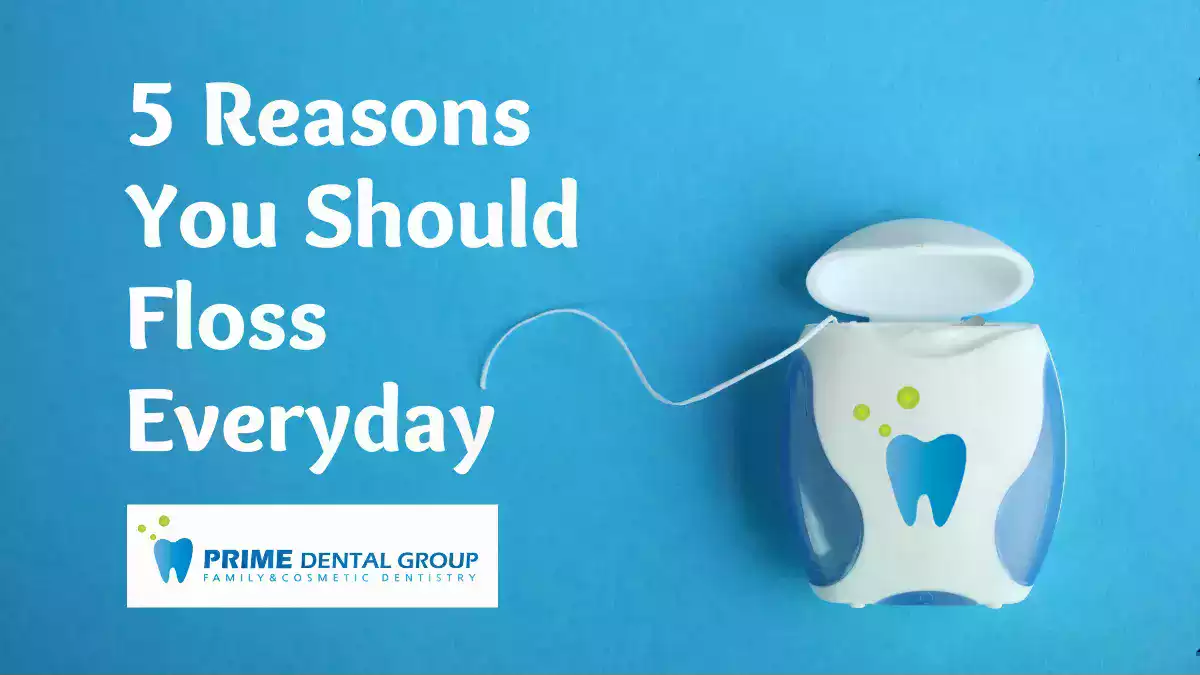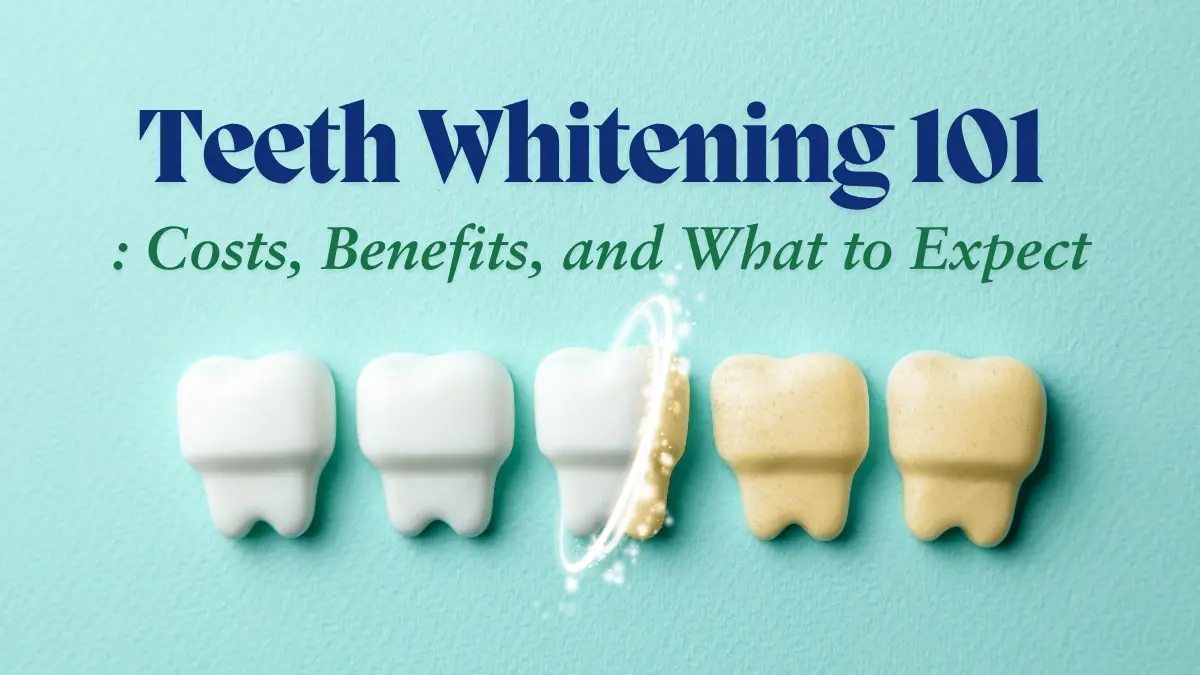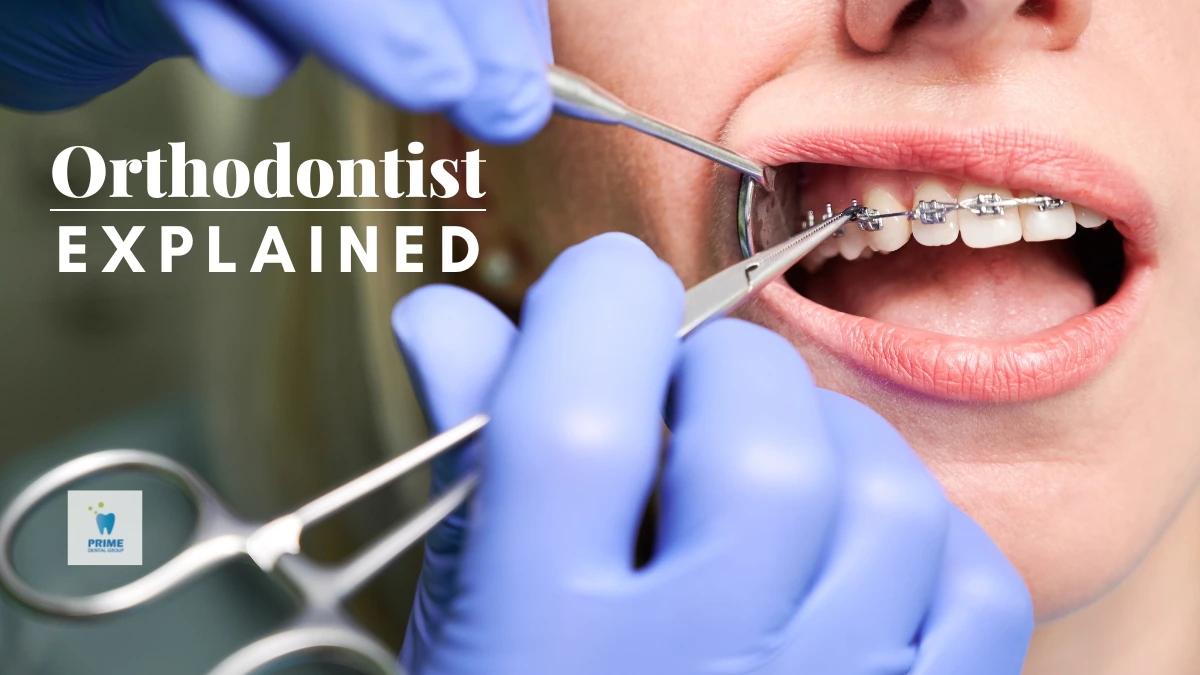Dental Specialties: What is a Periodontist and What Do They Do?
What makes a periodontist different from other dentists? They focus on gum health and preventing gum disease. They also place dental implants. Periodontists have extra training, including three more years after dental school.
They are key in keeping your mouth healthy and stopping gum disease. With their skills, they create treatment plans for you. This includes cleaning your teeth, gum grafts, and implants. Knowing about periodontal health is the first step to a better smile and health.
Periodontists are experts in gum disease treatment and dental specialties. They offer top-notch care and keep up with new treatments. They explain periodontal health in a way you can understand, helping you get a healthier smile.
Key Takeaways
- A periodontist is a dentist who specializes in the prevention, diagnosis, and treatment of periodontal disease and in the placement of dental implants.
- Periodontists receive three additional years of education beyond dental school, making them experts in gum disease treatment and dental specialties.
- Periodontists play a critical role in maintaining oral health and preventing gum disease progression.
- They offer personalized treatment plans, including scaling, root planing, gum grafting, and dental implant placement.
- Periodontists stay current with new treatments and technologies, making them the top choice for gum disease treatment.
- Understanding periodontal health is the first step to a healthier smile and overall well-being.
Understanding the Role of a Periodontist in Dental Care
Periodontists are dental experts focused on gum health. They treat issues that affect the teeth’s support structures. Their work ensures the best oral health by tackling problems general dentists can’t handle.
Educational Requirements and Training
To become a periodontist, one needs a lot of education and training. First, they finish four years of dental school. Then, they spend three more years in a specialized residency program. This training prepares them to handle complex periodontal diseases and perform detailed dental work.
Specialized Skills and Expertise
Periodontists have skills that make them stand out in dentistry. They are great at:
- Advanced gum disease treatments, including scaling and root planing
- Dental implant placement and management
- Cosmetic periodontal procedures to enhance the appearance of gums
- Regenerative techniques to restore damaged gum and bone tissue
| Aspect | Periodontist | General Dentist |
|---|---|---|
| Education | 4 years dental school + 3 years specialized training | 4 years dental school |
| Expertise | Gum disease treatment, dental implants, periodontal surgery | General dental care, routine cleanings, fillings |
| When to Visit | Advanced gum issues, implant placement, cosmetic gum procedures | Regular check-ups, basic dental problems |
Difference Between Periodontists and General Dentists
General dentists deal with many dental issues, but periodontists focus on gum disease. They are experts in severe gum problems, dental implants, and detailed gum and bone procedures. Seeing a periodontist shows a commitment to specialized care for complex oral health needs.
Common Signs You Need to Visit a Periodontal Specialist
It’s important to spot the early signs of periodontal disease to keep your mouth healthy. If you ignore these signs, you might face more serious dental problems. These could need advanced treatments.
- Swollen or Puffy Gums: Swelling is a sign of infection, which could mean gum disease.
- Gums That Bleed Easily: Bleeding when you brush or floss is a sign of gingivitis, an early gum disease stage.
- Persistent Bad Breath: Bad breath that doesn’t go away with brushing might mean gum problems.
- Painful Chewing: Pain while eating could be due to inflamed gums or a tooth infection.
- Receding Gum Line: If your gums pull away from your teeth, it exposes more of the tooth. This makes teeth more prone to decay and sensitivity.
Spotting these signs early through regular dental care can stop gum disease from getting worse. Seeing a periodontist early on helps treat problems quickly. This helps protect your gums and the structures around them.
| Symptom | Possible Condition | Recommended Action |
|---|---|---|
| Swollen Gums | Gingivitis | Schedule a dental cleaning |
| Bleeding Gums | Early Periodontal Disease | Consult a periodontist for evaluation |
| Bad Breath | Advanced Gum Disease | Undergo periodontal therapy |
| Painful Chewing | Infected Gums or Tooth | Seek professional dental care |
| Receding Gums | Periodontal Disease | Consider tissue sculpting procedures |
The Scope of Periodontal Disease and Its Impact on Oral Health
Periodontal disease is a big problem worldwide, affecting millions of people. It’s found in 7.4% of the global population. In the U.S., 47.2% of adults have periodontitis, and this number jumps to 70.1% for those over 65.

Stages of Gum Disease
Gum disease goes through several stages. It starts with gingivitis, which is just inflammation and bleeding. If not treated, it can turn into periodontitis, causing more serious damage. In the worst cases, surgery might be needed to fix it.
Risk Factors for Periodontal Disease
Many things can make you more likely to get gum disease. These include:
- Poor oral hygiene practices
- Smoking and tobacco use
- Certain medications that reduce saliva flow
- Systemic diseases like diabetes and obesity
- Genetic predisposition
- Hormonal changes, specially in women
- Psychological stress and substance abuse
Connection Between Oral Health and Overall Health
Keeping your mouth healthy is key because gum disease can lead to other serious problems. It can make diabetes worse, increase heart disease risk, and even cause strokes. It can also cause issues during pregnancy and affect your overall well-being. Getting regular periodontal treatment is important to avoid these problems and keep you healthy.
Comprehensive Periodontal Treatment Options
Managing periodontal disease requires different treatments based on the disease’s severity. Early stages can often be treated well. But, more advanced cases might need special treatments.
Non-Surgical Treatments
Scaling and root planing are common non-surgical treatments. They remove plaque and tartar from under the gum line. These methods are key for gingivitis treatment and gum disease prevention. Sometimes, doctors also use antimicrobial or antibiotic medicines to kill bacteria and help healing.

Surgical Procedures
For deeper pockets over 4 mm, surgery might be needed. Gum grafts, for example, take tissue from the roof of the mouth to cover receded gums. This helps with gum disease prevention and makes the mouth look better. Other surgeries include pocket reduction and regenerative procedures to restore lost bone and tissue.
Periodontal Maintenance Programs
Keeping up with periodontal maintenance is key to stop the disease from coming back. These programs include regular check-ups and cleanings. They are tailored to the patient’s needs, ensuring gum disease prevention and effective gingivitis treatment in the long run.
Understanding Gum Disease Prevention and Management
Keeping your oral health in check is key to avoiding gum health problems and periodontal disease. Good oral hygiene habits can greatly lower the chance of gum issues.
- Brush your teeth at least twice a day using fluoride toothpaste.
- Floss daily to remove plaque between teeth.
- Use antimicrobial mouthwashes to eliminate bacteria.
- Visit your periodontist regularly for professional cleanings.
But it’s not just about daily habits. Making lifestyle changes is also important for gum health. Eating well and quitting smoking can help a lot. Managing stress and keeping medical conditions like diabetes under control is also key.
- Schedule biannual dental check-ups with your periodontist.
- Undergo scaling and root planing if advised to remove stubborn plaque.
- Consider advanced treatments like LANAP or bone grafting for severe cases.

| Prevention Strategy | Description |
|---|---|
| Proper Brushing | Brush teeth twice daily to remove plaque and prevent tartar formation. |
| Daily Flossing | Flossing cleans areas between teeth where brushes can’t reach. |
| Regular Dental Visits | Professional cleanings help detect and treat early signs of gum disease. |
| Healthy Lifestyle | Balanced diet and avoiding tobacco support overall and gum health. |
Modern Techniques in Periodontal Surgery

Advances in periodontal surgery have made dental care better. Now, patients have treatments that are less painful and more effective. These new methods also help periodontal therapy work better.
Laser Treatment Options
Laser periodontal therapy uses special lasers to remove bad tissue and kill bacteria under the gums. It’s less invasive, making it less painful and helping wounds heal faster than old surgeries.
Regenerative Procedures
Regenerative techniques try to bring back lost bone and tissue. They use methods like guided tissue regeneration and growth factors. This helps rebuild the teeth’s support, improving oral health.
Dental Implant Surgery
Dental implants are a common choice for replacing teeth. Periodontists are key in placing implants. They make sure the implant fits well with the bone and tissues, which is key for its long-term success.
Modern periodontal surgeries offer many options for different needs:
- Gingival flap surgery
- Gum grafts
- Tooth extractions
- Dental bone grafts
- Surgical crown lengthening
- Smile lift
- Frenectomy
| Technique | Description | Benefits |
|---|---|---|
| Laser Treatment | Uses laser for precise removal of diseased tissue. | Minimally invasive, reduced discomfort. |
| Regenerative Procedures | Restores bone and tissue with regenerative materials. | Rebuilds support structures, improves oral health. |
| Dental Implant Surgery | Placement of implants to replace missing teeth. | Enhances functionality and aesthetics. |
Recovery and Aftercare Following Periodontal Procedures
After getting periodontal treatment, it’s key to follow the recovery and aftercare steps well. This helps the treatment work right and keeps your mouth healthy. Listening to your periodontist’s advice closely can help a lot in healing and avoiding problems.
Post-Treatment Care Guidelines
It’s important to stick to the post-treatment care rules for gum disease treatment. You should:
- Maintain meticulous oral hygiene by brushing twice a day and flossing daily to keep the treatment area clean.
- Follow a soft diet for the first few days to avoid irritating the gums.
- Use prescribed medications or pain relievers as directed to manage discomfort.
- Avoid smoking and limit alcohol consumption to promote faster healing.
Expected Timeline for Healing
The healing time changes based on the periodontal treatment type:
- Immediate Recovery: Mild soreness and swelling usually go away in 24 to 48 hours.
- Short-Term Healing: Swelling and bruising start to fade by the second week after the procedure.
- Full Recovery: Full healing might take several weeks. Regular check-ups with your periodontist are important during this time.
Osseous surgery, a common treatment for gum disease, might need a longer recovery than non-surgical treatments. Keeping up with good oral hygiene is key to avoiding more serious treatments later.
How to Choose the Right Periodontist for Your Needs
Finding the right periodontal specialist is key for good dental care. With almost half of U.S. adults having gum disease, picking wisely is important. It ensures you get the best periodontal therapy for you.
Questions to Ask During Consultation
- What is your experience with treating my specific periodontal condition?
- Can you describe your approach to treatment planning?
- What technologies do you use in your practice?
- How do you handle periodontal therapy and maintenance?
- What are the costs involved, and do you accept my insurance?
Evaluating Credentials and Experience
Checking a periodontist’s qualifications is important for quality dental care. Look for these:
- They should have a four-year undergraduate degree and a dental degree (DDS or DMD) from an ADA-accredited school.
- They should have completed a three-year residency in periodontics accredited by the American Dental Association.
- They should be board certified by the American Board of Periodontology, needing recertification every six years.
- They should have experience with both non-surgical and surgical periodontal therapy procedures.
Also, think about the periodontist’s communication style and how comfortable you feel during consultations. A caring and knowledgeable specialist can make a big difference in your experience and results.
| Credential | Importance | Details |
|---|---|---|
| Educational Background | High | Ensures foundational knowledge and training |
| Board Certification | High | Indicates expertise and commitment to the field |
| Experience | Medium | Practical skills in various periodontal therapies |
| Patient Reviews | Medium | Reflects patient satisfaction and care quality |
| Technology Used | Low | Modern tools can enhance treatment efficiency |
Long-Term Benefits of Professional Periodontal Care
Keeping your gum health in top shape is key to keeping your teeth and mouth healthy. Regular visits to a periodontist can stop periodontal disease from getting worse. This is important because untreated periodontal disease can cause serious problems.
- Prevention of Tooth Loss: Catching periodontal disease early can prevent teeth from falling out.
- Reduced Risk of Systemic Health Issues: Healthy gums are linked to lower risks of heart disease, diabetes, and breathing problems.
- Cost-Effectiveness: Preventive care is cheaper than fixing problems caused by gum disease.
- Aesthetic Benefits: Healthy gums make your smile look better and more confident.
Regular periodontal care is a smart investment in your oral health and overall health. By taking care of your gum health early, you can keep your teeth healthy for a long time. This leads to a better quality of life.
| Benefit | Description |
|---|---|
| Prevents Tooth Loss | Stops the progression of periodontal disease, preserving natural teeth. |
| Reduces Systemic Risks | Lowers the likelihood of heart disease, diabetes, and respiratory issues. |
| Cost-Effective | Prevents expensive treatments by addressing problems early. |
| Aesthetic Improvement | Maintains healthy gums for a confident and appealing smile. |
Conclusion: Taking Control of Your Periodontal Health
Keeping your periodontal health in check is key to your overall well-being. About 4 in 10 U.S. adults aged 30 and older had gum disease between 2009 and 2014. This shows how important it is to prevent gum disease.
Regular dental care is vital for treating and catching gum disease early. Simple habits like brushing and flossing can stop plaque buildup. Also, seeing a periodontist for cleanings and check-ups can help avoid serious gum problems.
Eating a balanced diet full of vitamins A and C helps your gums. Not smoking also lowers your risk of gum disease. Knowing how oral health affects heart disease and diabetes highlights the need for good dental care.
By following these steps, you can greatly improve your dental health and avoid losing teeth to gum disease. If you see bleeding gums or bad breath that won’t go away, see a dentist right away.
Take charge of your periodontal health today. Make sure to visit your dentist regularly, keep up with good oral hygiene, and get specialized care when needed. This way, you’ll have a healthy, beautiful smile for many years.
FAQ
What is a periodontist and how do they differ from a general dentist?
A periodontist specializes in gum disease and dental implants. They have more training than general dentists. This extra training helps them handle complex gum issues.
What are the common signs that indicate I need to see a periodontal specialist?
Signs you might need a periodontist include swollen or bleeding gums. Also, bad breath, pain while chewing, and receding gums are red flags. These symptoms often mean you need specialized care to avoid more serious problems.
What treatment options are available for treating gum disease?
For gum disease, treatments range from non-surgical to surgical. Non-surgical options include scaling and root planing, and using antimicrobial medications. Surgery might be needed for gum grafts or pocket reduction. Regular maintenance is also key to prevent gum disease from coming back.
How can I prevent gum disease and maintain good gum health?
To prevent gum disease, brush and floss well, and use mouthwash. Regular dental visits and cleanings are also important. Eating right, quitting smoking, and managing stress help keep your gums healthy.
What is the connection between oral health and overall health?
Periodontal disease can affect your overall health. It’s linked to diabetes, heart disease, and pregnancy issues. Good oral health is key to a healthy body and smile.
What should I expect during recovery after periodontal procedures?
After periodontal procedures, follow your dentist’s care instructions. This includes keeping your mouth clean and following a diet. Pain management is also important. The healing time varies, but following your dentist’s advice is vital for a smooth recovery.
How do I choose the right periodontist for my needs?
When picking a periodontist, look at their credentials and experience. Check if they are board certified and have the right training. Also, consider their treatment approach and how they communicate. This ensures you feel comfortable and confident in their care.
What are the long-term benefits of professional periodontal care?
Professional periodontal care prevents tooth loss and reduces health risks. It also improves your smile’s appearance. Keeping your gums healthy is essential for long-term oral health.
What modern techniques are used in periodontal surgery?
Modern periodontal surgery uses lasers and regenerative techniques. These include dental implant surgery for tooth replacement. These methods improve treatment outcomes and precision in gum disease care.
How important is regular periodontal maintenance after treatment?
Regular maintenance is vital to prevent gum disease from coming back. Visiting your periodontist regularly helps catch any early signs. This keeps your gums healthy and supports long-term oral health.
Source Links
- Periodontists | Gum Specialist Doctors | Torrey Hills Dental – https://torreyhillsdental.com/blog/periodontists-your-gum-specialist-doctors/
- Periodontal Specialists in Philly | Penn Dental Medicine – https://penndentalmedicine.org/our-services/periodontics/what-can-be-done-for-periodontal-disease/pa-periodontal-disease-doctors/
- Gum Disease | Dental Specialties Inc | Dedham & Randolph MA – https://www.dentalspecialties.com/dental-services/periodontics/gum-disease/
- What is a Periodontist? – American Academy of Periodontology – https://www.perio.org/for-patients/what-is-a-periodontist/
- What Is a Periodontist? – https://www.webmd.com/a-to-z-guides/what-is-periodontist
- 6 Symptoms That Tell You When To See a Periodontist – https://mdperio.com/blog/6-symptoms-when-to-see-a-periodontist/
- 3 Signs You Need to See a Periodontist – https://www.akemidentalspecialists.com/encino-ca/resources/blog/when-do-you-need-to-see-a-periodontist
- When to See a Periodontist | Detroit, Michigan – http://www.detroitdentalspecialtycenter.com/our-services/periodontics/when-to-see-a-periodontist/
- A public health approach for prevention of periodontal disease – https://pmc.ncbi.nlm.nih.gov/articles/PMC7457923/
- What is a Periodontist? Definition & Types of Periodontics – https://my.clevelandclinic.org/health/articles/23461-periodontics-periodontist
- Periodontal disease Information | Mount Sinai – https://www.mountsinai.org/health-library/report/periodontal-disease
- Periodontitis – Diagnosis and treatment – https://www.mayoclinic.org/diseases-conditions/periodontitis/diagnosis-treatment/drc-20354479
- Periodontal (Gum Disease) Therapy | College of Dentistry – https://dentistry.uic.edu/patients/dental-services/specialty-services/periodontal-gum-disease-therapy/
- Periodontal (Gum) Disease: How Serious Is It? – https://my.clevelandclinic.org/health/diseases/21482-gum-periodontal-disease
- Smiley Periodontics & Dental Implants in Riverside County | Mohamed A. Hassan, DDS, MS – https://smileyimplants.com/about-us/insights-articles/comprehensive-guide-to-gum-disease-prevention-and-treatment-options/
- Periodontal (Gum) Disease – https://www.nidcr.nih.gov/health-info/gum-disease
- The Latest Technology Available in Periodontics for Better Care & Results – https://www.gilaridgedental.com/latest-technology-available-in-periodontics-for-better-care-results/
- Overview of Periodontal Surgical Procedures – StatPearls – https://www.ncbi.nlm.nih.gov/books/NBK599507/
- Gum Disease Treatment – https://my.clevelandclinic.org/health/treatments/10907-gum-disease-treatment
- Why Do I Need Osseous Surgery? – https://my.clevelandclinic.org/health/treatments/24886-osseous-surgery
- Gum Graft Surgery: What it Is, Procedure & Recovery – https://my.clevelandclinic.org/health/treatments/23504-gum-graft-surgery
- Periodontal Surgery: Preparation, Procedures, Aftercare | Richard Newhart, D.D.S. – https://thegumdr.com/periodontal-surgery-preparation-procedures-aftercare/
- How to Choose a Periodontist | What Should You Know? – https://www.yourdentistryguide.com/periodontists/
- How to Choose a Periodontist – https://ntxperioandimplants.com/how-to-choose-a-periodontist/
- What Is The Best Way To Choose A Periodontist? – https://mysandiegodentalimplant.com/periodontics/what-is-the-best-way-to-choose-a-periodontist/
- The Benefits of Professional Periodontal Treatment in Fairfax, VA – https://optimaldentalcenter.com/the-benefits-of-professional-periodontal-treatment-in-fairfax-va/
- Dentists Edgewater – Family Dentistry Orange City | Universal Smiles Dentistry – https://www.universalsmilesdentistry.com/Blog/Post/Discover-the-Benefits-of-Periodontics
- About Periodontal (Gum) Disease – https://www.cdc.gov/oral-health/about/gum-periodontal-disease.html
- Guide to Periodontal Health: Protect Your Gums – https://coloradogumcare.com/guide-to-periodontal-health/






